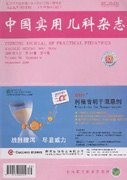|
|
Relationship between glycaemic variability and outcomes in critically ill children at different age
DU Yu-hui*,LI Jing,LIU Cheng-jun
2020, 35(6):
471-477.
DOI: 10.19538/j.ek2020060611
Objective To compare the ability of different indices of glycemic variability(GV) in the prognostic evaluation of critically ill children and investigate the effect of age in GV and mortality. Methods A retrospective study of 410 patients was conducted admitted to the medical-surgical PICU of a teaching hospital from January 2016 to December 2016. The patients were divided into survivors or non-survivors according to the 28 days physical condition after PICU admission. Physiological parameters and outcome data were recorded for 72 h after PICU admission,a variety of statistical methods were used for statistical analysis, including the univariate, spearman correlation,receiver operating characteristic(ROC) curve and logistic regression analysis and so on. Results (1)Survivors and non-survivors showed significant differences in terms of the SD,CV,MAGE,and GLI( P<0.05,for all). However,GLI was superior to the other indices(GLI:r=0.404, P<0.001;AUC=0.626,95%CI=0.558~0.693),and showed an independent association with ICU mortality(OR=1.069,95%CI=1.018~1.122,P<0.01. (2)Different from adult studies, there is a heterogeneous effect of GV in children, sub-group analysis disaggregated by quartiles of MGL and GV revealed that younger subjects(age ≤36 months) in the lowest quartile of the MGL and in the highest quartile of GV had significantly higher mortality(71.4%);the older children(age>36 months) in the highest quartiles of MGL and GV experienced higher mortality(69.2%). Conclusion GV increased the risk of mortality in critically ill children,and among all glucose parameters evaluated,GLI was found to be the strongest predictor of outcomes. This study is the first report showing that there is a heterogeneous effect of GV in different age groups in children.
|

